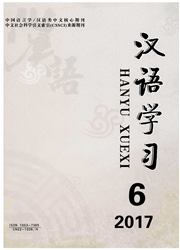

 中文摘要:
中文摘要:
“都XP了”含有预设或人们共有的常识,并将上文信息背景化。在跨句的篇章中,“都XP了”主要同义关联上文,极少同义关联下文。“都XP了”偏句同义关联上文的形式总体上按完全同形、部分同形、代词回指、完全异形的序列递增。其相邻正句也强势关联上文,此时整个复句复线衔接不同的上文信息。正句的篇章衔接关系按照使用频率的高低排序,分别为:反义关联上文、同义关联上文、同义关联下文、反义关联下文。
 英文摘要:
英文摘要:
The semantic function of "(dou) XP (le)" not only contains presuppositions and common sense, but also contextualizes the information of the text. "(dou) XP (le)" is synonymously connected to the previous text in high fre- quency, but to the succeeding text in low frequency. The frequency increases as a whole according to the sequence of identical forms, partially identical forms, pronouns and heteromorphs. The principal clauses adjacent to "(dou) XP (le)" are also connected to the previous text in high frequency, and the composite sentences are connected to the different parts in the previous text with the bi-line model. The cohesive relations of the principal clauses are, by the order of the frequency from high to low, the antonym cohesive to the previous text, the synonym cohesive to the previous text, the synonym cohesive to the following text, and the antonym cohesive to the following text.
 同期刊论文项目
同期刊论文项目
 同项目期刊论文
同项目期刊论文
 期刊信息
期刊信息
